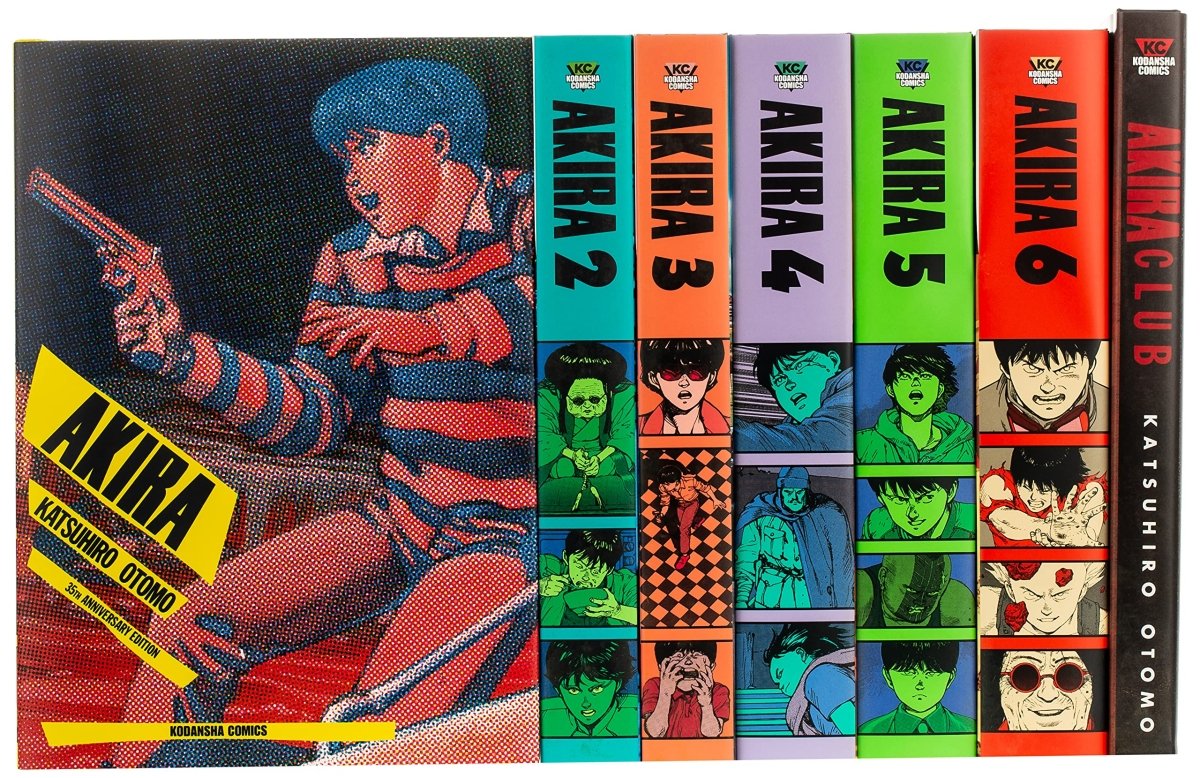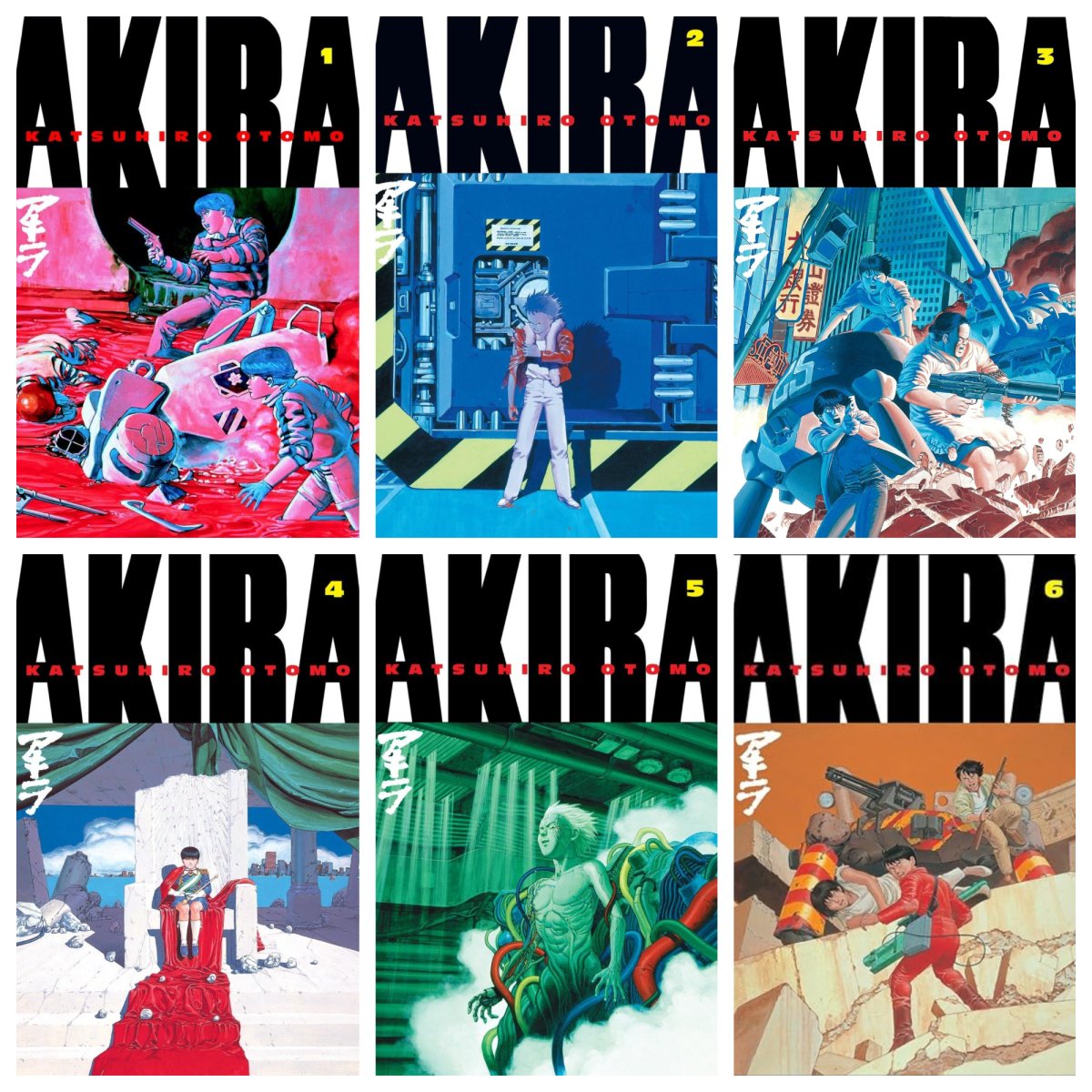If you watch a lot of anime or cartoons, you may have seen a scene similar to this:

A character on a bike (or something similar) slides away from the camera in a badass way! Batman: The Animated Series, Teen Titans, Yu-Gi-Oh! 5DS, Overwatch or even Paw Patrol: The Movie – no matter if it is an Anime, a Cartoon or even a video game, a lot of media worldwide references this scene.
But why? To answer this question, one should look at the anime and the manga that first showed us this slide: Akira.
What is Akira?
30 years after a mysterious explosion destroys all of Tokyo, the city is rebuilt as Neo-Tokyo in 2019. Although the high skyscrapers and flashy lights suggest a wealthy city, the reality for a lot of people is filled with extreme violence between different gangs and political turmoil.
When the young gang leader Shōtarō Kaneda and his friend Tetsuo Shima are captured by the military after an accident, it becomes clear that Tetsuo Shima is more than just an ordinary boy.
This entangles the two in a conspiracy that uncovers a secret beneath the shaky foundation of Neo-Tokyo – a secret that could change everything.

During the original serialization by Kodansha, spanning from 1982 to 1990, Akira became a cult classic in Japan. Thus, it is not surprising that six years later, in 1988, Katsuhiro Otomo's manga was adapted into an anime film, which he himself wrote and directed. This anime would finally transform the popular story into a worldwide phenomenon!
It became so popular that Marvel Comics, under their Epic imprint, published the original Manga series completely translated in English, making it one of the first manga to ever receive this treatment.
This colorized Akira edition was groundbreaking, featuring digital coloring by Steve Oliff with direct approval from Otomo himself. While it helped introduce Akira to a Western audience, the rights eventually reverted to Kodansha, who have since focused exclusively on publishing the original black-and-white version. While there is no reprint in sight, the color edition, released only in perfect-bound deluxe “single issues”, remains a sought-after collector's item!
Akira slid into a rough time for Anime
At this point, it should be clear that Akira was something special. References across different types of media, an anime that became a blockbuster worldwide, and a swift serialization in the US. However, Akira established itself in a time, where this shouldn’t have been possible.
Back in the 80s, Japan’s economy flourished to an incredible level, which made it possible for a lot of people to live economically stable and prosperous lives. If a society reaches economic stability and prosperity, its people start to consume more – especially entertainment. Thus, the Japanese entertainment sphere, mostly made up of manga and some anime, started to grow. Not only were more anime and manga released, but the artists themselves could put more work into their stories. Although anime existed at this point, this prosperity gave studios and artists the opportunity to establish themselves and demonstrate the full potential of animation.
However, back in the early 80s, anime and manga were yet popularized in the western hemisphere.
The Western audience was satisfied with their own stories and it was not easy to compete with Disney movies or George Lucas’ Star Wars, which was on its way to become a mass phenomenon.
Additionally, the standardization of formats in US comics made it difficult for other styles to gain a successful foothold.
Thus, Japan's storytelling had not yet established itself in the West, despite reaching new heights. But when the Akira anime hit theaters in 1988, something changed.
What made Akira so special?
So, why Akira? There are a few reasons for that.

The first reason being that the world of Akira stays very close to Japanese culture and shared memory, while telling a new and fresh story. Japanese audiences loved Akira, due to its successful combination of tradition and futuristic themes, making its world truly feel like a futuristic version of Tokyo.
Additionally, the story itself processes a significant generational trauma for Japan: the atomic bombings of Hiroshima and Nagasaki during the Second World War. The story itself centers around an explosion and the rebuilding of a Japanese metropolis. However, it does not shy away from showing that rebuilding is not always easy and that it brings problems and political turmoil – similarly to what Japan’s society went through after the bombings.
While the Japanese audience felt represented and could process through this story, the Western audience was confronted with a new perspective. The bombings of Hiroshima and Nagasaki, with the subsequential occupation of Japan by the US, were always seen as a necessary action to secure victory. Thus, US society never truly considered the aftermath or the trauma that these two bombings inflicted on the people of Japan.
Akira showed the impact of these events to a completely new generation in the West through a fictional setting, making it a unique and intriguing story for Western audiences.

Another reason for the success of this story is that the world of Akira was something that audiences had rarely seen before. While the genres of science-fiction and cyberpunk were not new, the way Otomo constructs Akira’s futuristic setting is special in two ways.
Firstly, Otomo uses his own experience as a man moving from the countryside to the big city of Tokyo during times of turmoil, to create a realistic setting of a society that is torn after a catastrophe. These conflicts are mostly told through details and the consequential world building: destroyed statues, graffiti everywhere and overcrowded areas, stand in contrast through flashy lights, fine dining restaurants and futuristic cars that scream ‘luxury’. Thus, the world building is more seen than told and truly feels consistent.
Secondly, Otomo doesn’t see his post-apocalyptic city as something completely artificial or synthetic, but rather as a mixture of the past and the future. He mixes synthetic and organic elements to create a hybrid style that feels unique in every way. Cables that look like veins, streets that feel like nerves and imperfections in buildings that reminds one of scars. Additionally, he doesn’t let his city become too futuristic. Instead of gangs on flying cars with swords made out of light, you see gangs on futuristic bikes fighting with rusty pipes.
This use of real experiences and hybrid elements would not only create a unique world but also forever shape how the genres of science fiction and cyberpunk construct their cities and worlds.
However, the most important reason for the success of Akira was that it revolutionized animation in Japan. Akira was produced by seven studios with a budget of 11 billion Yen, which was made possible by the strong economic growth in Japan during the 80s. This budget, and of course the dedication of the artists involved, made it possible for the animation to reach completely new levels of artistry and complexity.
Before Akira, it was usual practice to animate anime in 24 frames per second. This is the frame rate that lets the human brain perceive motion as fluid. Previous to Akira, only 12 frames were drawn and just put onto the screen for the duration of two frames to make the animation process cheaper and more efficient. Akira’s budget allowed them to upgrade to unique 24 frames per second, which resulted in a very smooth animations very close to live-action.
Additionally, the artists also spent more time on the single frames. This not only enabled the team to portray more details in the world, which would make the praised world building possible, but also enabled them to animate different things at the same time. A group of 8 people could all move independently, and the background could portray a significant amount of movement, which both made the world feel incredibly alive.
These three aspects made Akira into something special that could even transcend the Japanese border and show the West how amazing Anime could be. Although Akira is praised worldwide and definitely made an impact for the animation industry, which can be seen by the thousands of references, the Anime suffers from one major problem: It is a summary of a much larger story.
Why you have to read the Manga!
Akira has been around for a while now, and most people who are into these types of stories have probably seen the movie. Thus, it would be logical to ask why one should read the manga when the anime is more widely discussed.
However, just because the anime is iconic doesn't make it necessarily superior to the source material, and that's because the anime leaves out A LOT!

While the movie and the manga are the same story, the anime only adapts the first half of the first volume and the second half of the sixth and final volume. To connect these two parts, the anime uses storylines and elements of the other volumes to tell the story.
However, this makes it feel like something is missing – because there is! And although it is understandable that the anime could not adapt the whole story, and it does bring its own set of elements to expand Neo-Tokyo through animation and music, the world of Akira profits from the way the manga approaches the story.
Not only does the manga spend more time on worldbuilding, through incredible artwork with insane amounts of detail, but also on character development and individual impacts. We get more information about each of these characters, which makes their motives and ideals more understandable. Additionally, some characters that receive merely a minute of screen time in the anime become crucial figures in the manga's storyline.
One could say that the anime is more of a summary for a larger story that is told in the manga. However, it would be unfair to denounce it, because (now comes the twist!): it did have an impact on the manga too!
As mentioned, Otomo was the writer of both the anime and the manga. While the manga was already in its sixth year of publishing when the anime came out, it would still run for two more years. Thus, it is not surprising that Otomo said that the anime influenced the later parts of the Akira manga. Consequently, one could say that the anime and the manga formed a symbiotic relationship, where both influenced the other more or less. Like an ongoing conversation between two formats, circling the same core story from different angles.
Akira is truly a masterpiece!
No matter if you watched the anime or read the manga already, Akira is a unique masterpiece where it is more than worth checking out the other one as well. While the Anime is a visually stunning masterpiece with an incredible soundtrack, the Manga is a visual masterpiece that takes more time to present a world that is unique in so many ways.
However, both approaches present a thrilling experience in a post-apocalyptic world that draws inspiration from the future and the past. This makes the world extremely enticing and makes it feel like a truly realistic depiction of a dystopian future. The sheer amount of details also expands the world and immediately transfers the vibe that Otomo had in mind for Neo-Tokyo.
Not only the world building, but also the complex story, delivers food for thought about current social and political struggles that are still relevant to this day. The characters and the dynamics between them fit perfectly into the world and enable Otomo to make his story surprising and thrilling.
It is not surprising that Akira is referenced throughout all media, due to its incredible influence on animation, world building, and storytelling.
How to collect Akira
If you want to dive into the world of Akira and Neo-Tokyo, you can do so through six volumes published by Kodansha Comics, which collect the complete story.
You can also collect the whole series in a box set that was released for the 35th anniversary. It not only includes all six volumes in a beautiful hardcover edition, but also the Akira Club art book by Otomo. A beautiful addition for every manga collection:
To see the full extent of Otomo's genius, you can also get the unique Akira: Art Of Wall Box Set. It contains a beautiful poster and four volumes, one of which includes an interview where Otomo shares how he came up with Akira, what ideas he had to scratch, and more!
However, the name of this set comes from the other three volumes. These are special books that each stretch out to 25 feet (7.5 meters), creating a literal wall of artworks, which gives us the best possible way of being mesmerized by his incredible art.
Are you ready to slide into Neo-Tokyo with us?








